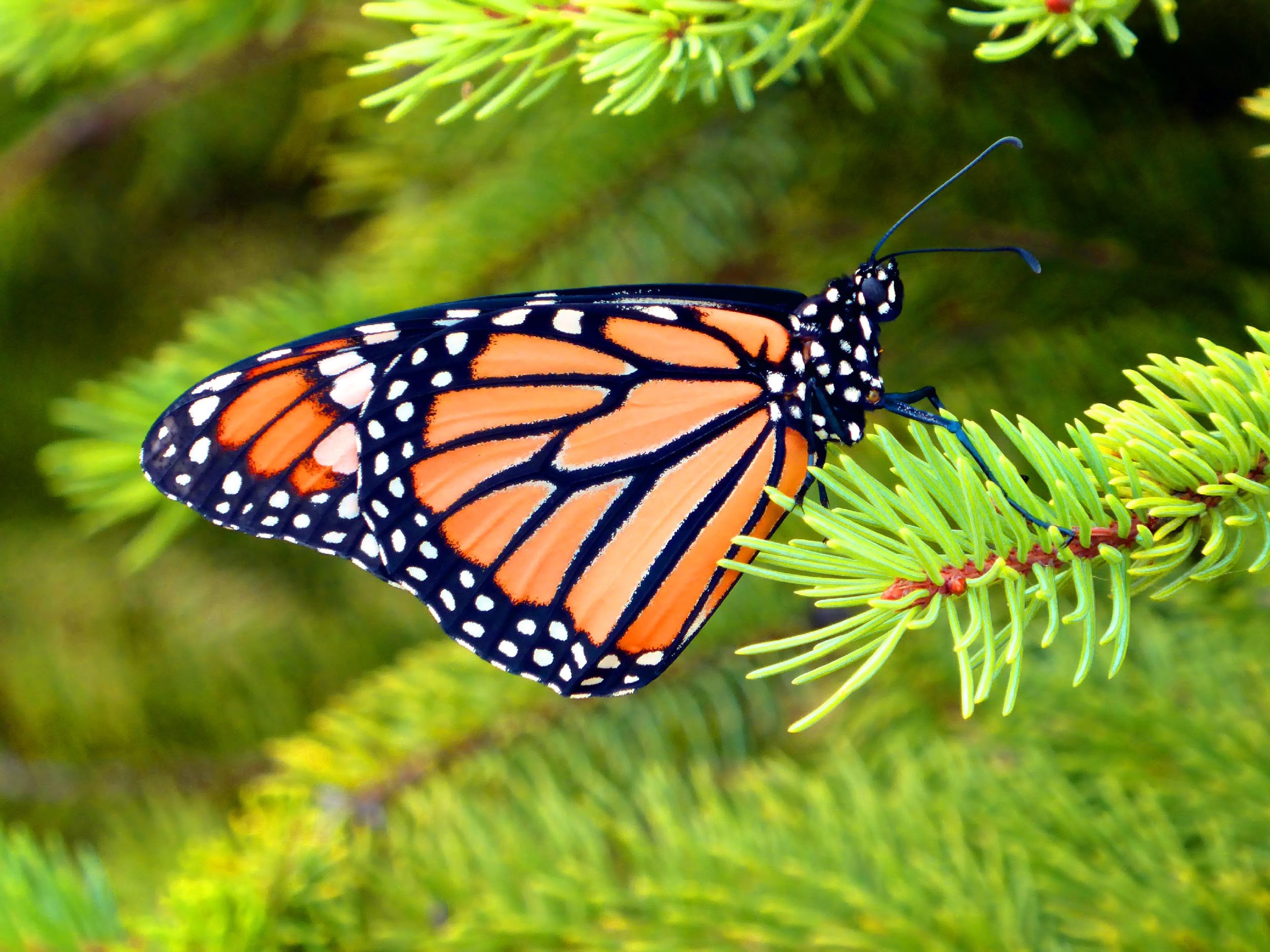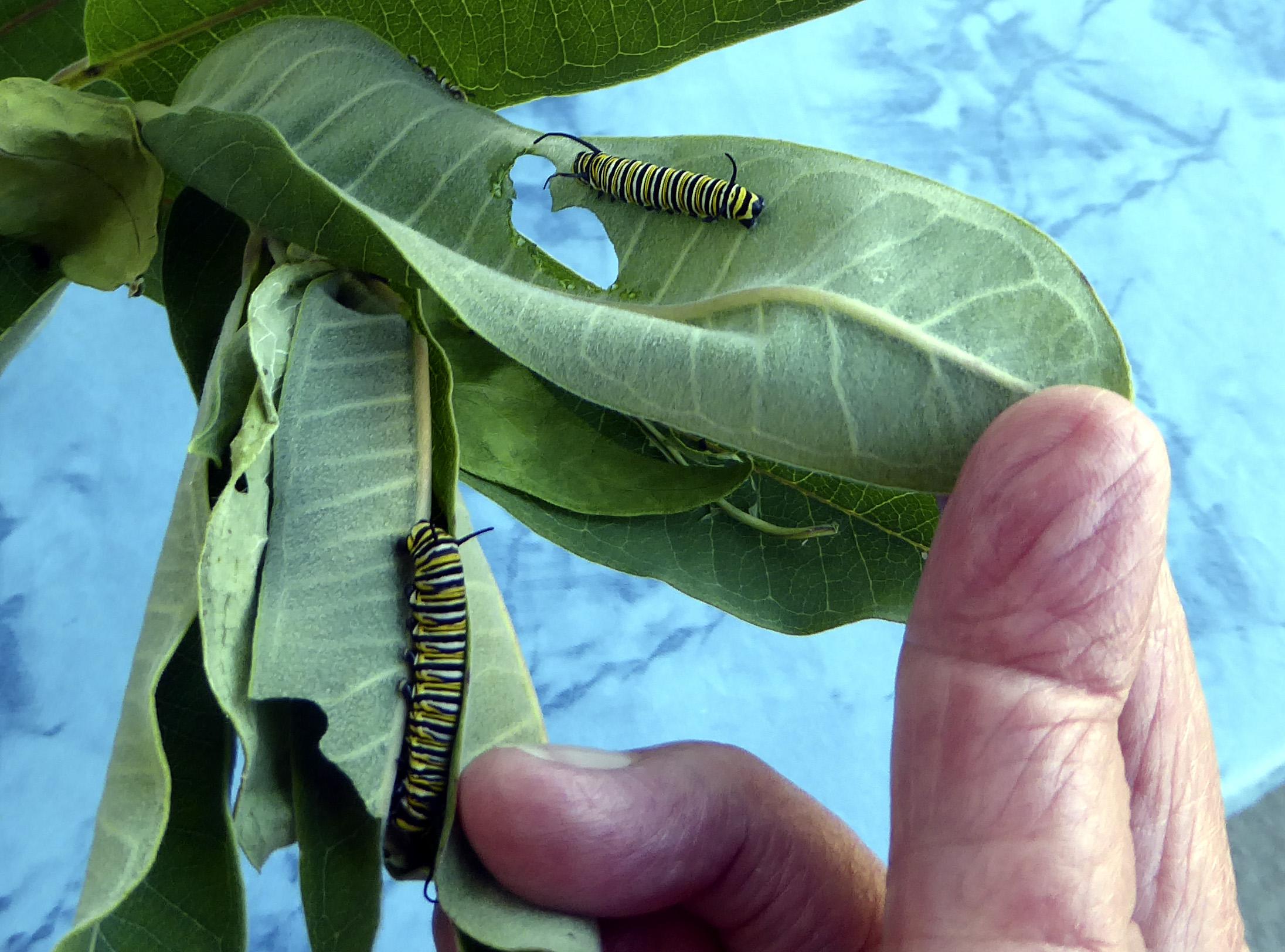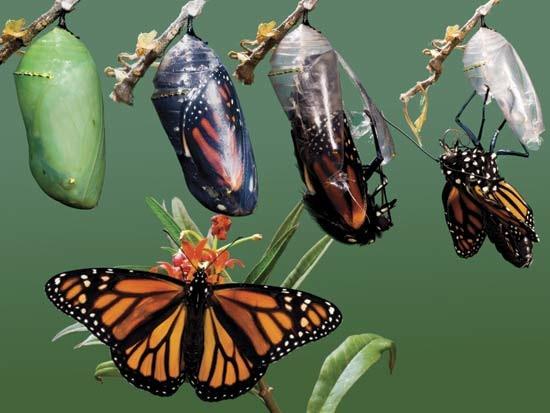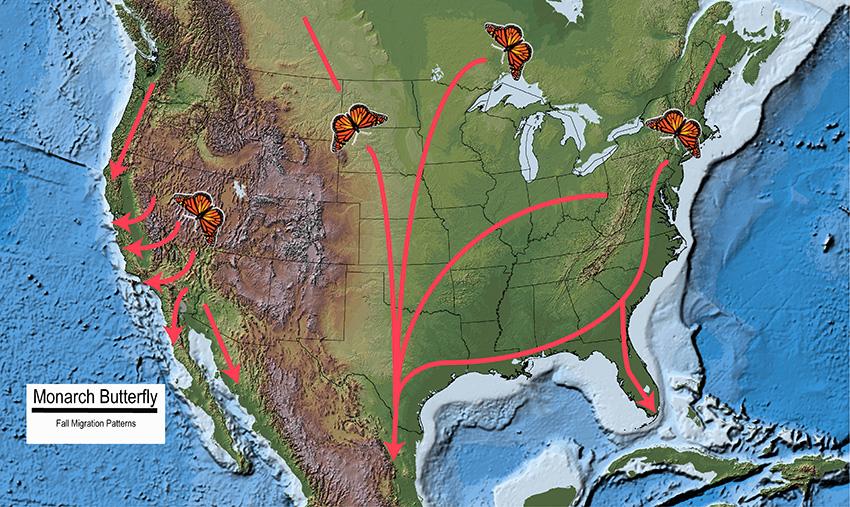By Bob Suchanek, Waters and Wetlands Steward

A Monarch Butterfly
Photo credit – Bob Suchanek
My neighbor Karen raises monarch butterflies. Well, not exactly “raises” since the butterflies are perfectly capable of raising themselves. It’s more like giving them a protected home on her patio with plenty of food. This year she watched 29 of her butterflies fly away, some beginning a journey of thousands of miles. Watching monarchs is like watching magic!
Author Christopher Priest writes: “Every great magic trick consists of three parts or acts. The first part is called “The Pledge”. The magician shows you something ordinary: a deck of cards, a bird, or a man. He shows you this object. Perhaps he asks you to inspect it to see if it is indeed real, unaltered, normal. But of course it probably isn't. The second act is called “The Turn”. The magician takes the ordinary something and makes it into something extraordinary. Now you're looking for the secret...but you won't find it, because of course you're not really looking. You don't want to know. You want to be fooled. But you won't clap yet. Because making something disappear isn't enough; you have to bring it back. That's why every magic trick has a third act, the hardest part, the part we call “The Prestige”.”
Monarch magic follows the same path.
The Pledge
Change is in the air and, as always, magic is too. The end of summer signals the end of the monarch butterfly's northern busyness and the birth of the last Minnesota generation of the season. These are the great-great grandchildren of monarchs that spent the previous winter hanging out in the mountains of northern Mexico; they must return to their ancestral wintering grounds.
Each tiny baby monarch larva (weighing less than a thousandth of a gram when it emerges from its egg) will feast on milkweed and “bulk up” to a caterpillar destined for biological magic. Shedding its skin five times, this eight legged eating machine may grow to over two inches long and weigh over a thousand times it's birth weight.
The promise of a butterfly is the caterpillar.
“There is nothing in a caterpillar that tells you it’s going to be a butterfly.”
-R. Buckminster Fuller, Architect

Caterpillars on Milkweed
Photo credit – Bob Suchanek
The Turn
It's been almost two weeks since the caterpillar was born and now it's hanging upside down. But wait, the yellow, white, and black skin begins to shed and reveals an extraordinary gold laced capsule. This isn't something made and entered by the caterpillar, it is the caterpillar.
The caterpillar has become a chrysalis, a golden being dissolving itself into a chemical soup in preparation for transformation. Within the chrysalis float imaginal discs, the instructional seeds that build the parts of a butterfly from caterpillar soup.
Imaginal discs were grown in the caterpillar while it was still developing as an egg. Each disc contains instructions for a butterfly body part; instructions that aren't executed until the monarch disintegrates all of its caterpillar body parts.
"It's the construction of a butterfly... from caterpillar soup.”
- David James, Entomologist
Becoming a Chrysalis
Photo credit - http://blog.13moonpeacetime.com/
The Prestige
Nearly a month after its emergence from an egg, a monarch sheds its skin for the last time and emerges fully formed, airworthy and ready to fly thousands of miles to spend the winter in the mountains of Mexico. The magic trick is complete!

A New Monarch
Picture Credit - Yahoo
The Next Generation
The overwintering monarchs wait until the Mexican springtime to lay the next generation, Generation 1, the generation that flies north. Generation 1 monarchs return to Minnesota on a weather driven schedule but are likely here by mid-May.

Monarch Migration Paths South
Picture credit – mountainlifemedia.ca
The End of Magic?
On March 13 of this year, the Center for Biological Diversity wrote “The yearly count of monarch butterflies overwintering in Mexico, released today, shows a decrease of 53% from last year’s count and is well below the threshold at which government scientists predict the migration could collapse. Scientists estimate that 6 hectares—about 15 acres—is the extinction threshold for the migratory butterflies’ survival in North America. The latest count, conducted by World Wildlife Fund Mexico, found overwintering monarchs occupying just 2.83 hectares, or 7 acres.“
In other words, the migratory population of monarch butterflies may not survive modernity. The brave new world of climate change, industrial agriculture, and perpetual development could soon bring an end to their spectacular migration. The U.S. Fish and Wildlife Service may implement Endangered Species Act protection as a threatened species in December of this year—protection that has been effective in preventing the extinction of other wildlife populations.
Click below the link below for more information and to sign the U.S. Fish and Wildlife Service petition to save the monarchs.